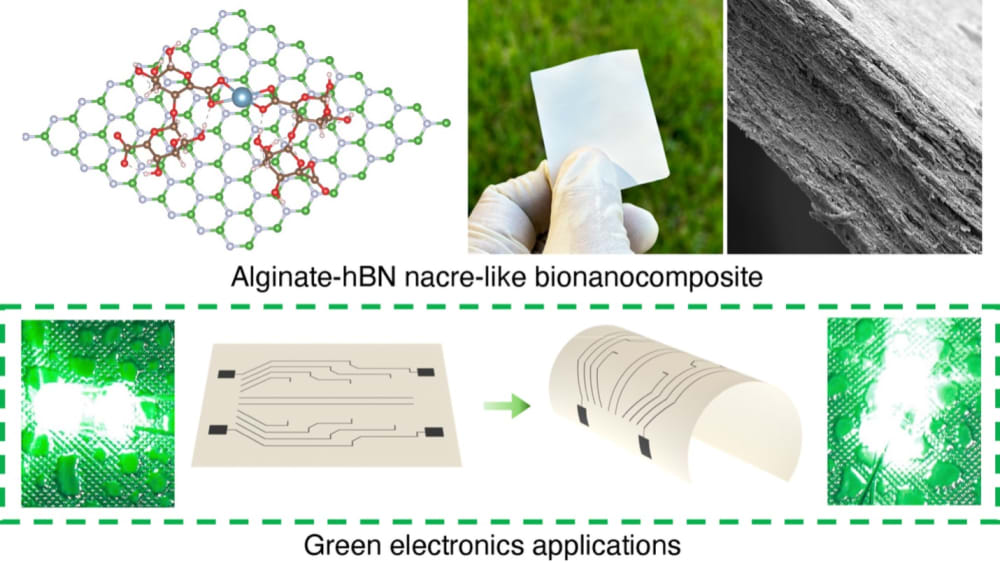Electronic components and devices are indispensable to modern civilization, but their widespread use has led to increasing environmental concerns, particularly the generation of electronic waste (e-waste). Flexible electronics, in particular, contribute significantly to this issue, as they are typically made from non-degradable, petroleum-based synthetic polymers that persist in the environment long after their end use. Simultaneously, a rising global waste issue is the accumulation of seaweed in oceans and on coastlines, often referred to as “sea-waste.” This biomass, primarily brown algae, disrupts marine ecosystems and poses sanitation and aesthetic issues along shorelines. However, brown algae are also a rich source of alginate, a biodegradable and environmentally friendly biopolymer. Our innovation explores a novel, dual-purpose solution: utilizing algae-derived biopolymers to engineer sustainable electronic devices, thereby addressing both e-waste and marine waste challenges simultaneously (https://doi.org/10.1021/acsnano.4c09365).
Inspired by the hierarchical designs found in natural nacre, we developed a multifunctional bionanocomposite by integrating alginate with high-performance two-dimensional (2D) hexagonal boron nitride nanosheets (BNNS). Our scalable fabrication strategy combines hydrogel casting of alginate with spatial confinement of high BNNS loading, followed by successive layer-by-layer assembly and hot pressing. This hierarchical structure enables a strong synergy between the BNNS and the alginate matrix, resulting in enhanced mechanical robustness, flexibility, thermal conductivity, flame retardance, and dielectric strength, surpassing those of conventional synthetic polymer systems. Developing such multifunctional properties is essential, as modern electronic devices require materials that can simultaneously withstand mechanical stress, dissipate heat efficiently, and provide electrical insulation.
We demonstrated two practical applications of this bionanocomposite as a flexible substrate for high-performance supercapacitors and flexible electrical interconnects. Using 3D printing, we integrated energy storage and conductive components directly onto this bionanocomposite. The supercapacitors exhibit outstanding volumetric capacitance and robust rate capability, while the flexible interconnects show promise for bioelectronics and microelectronic packaging due to their mechanical compliance, thermal stability, and electrical reliability. Achieving this level of performance from natural materials is inherently challenging due to their variability, limited processability, and weak interface compatibility. Our approach overcomes these limitations through the rational design of hierarchical nanostructures and biopolymer engineering.
This nature-inspired platform represents a significant advancement over conventional materials, as it simultaneously reduces waste, enables recyclability, and delivers high device performance. With broad applicability in energy storage, bioelectronics, and sustainable electronic packaging, our technology offers tangible real-world impact and strong market potential, aligning with global trends toward a greener, circular electronics industry.
Like this entry?
-
About the Entrant
- Name:Muhammad M Rahman
- Type of entry:teamTeam members:
- Software used for this entry:None
- Patent status:none


